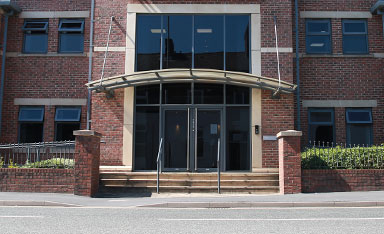What is conveyancing?
If you are looking to buy or sell a property, you’ve likely encountered the term ‘conveyancing’. While it may sound like legal jargon, conveyancing is a vital process that ensures the smooth transfer of property ownership from seller to buyer.
Whether you’re a first-time buyer or a seasoned investor, understanding conveyancing can help you navigate the complexities of property transactions with confidence.
Our property legal experts discuss what conveyancing is and what the conveyancing process involves in particular for residential properties.
Conveyancing explained
Conveyancing is the legal process of transferring property ownership from one person to another.
It involves a series of steps, checks, and legal documents to ensure that the transaction is valid, and the rights of both parties are protected. Whether it’s a residential home, commercial property, or vacant land, the conveyancing process is essential for all types of real estate transactions.
What does the conveyancing process include?
Conveyancing requires several steps to ensure a smooth and legally valid transfer of property rights from the seller to the buyer.
Here is an overview of the conveyancing process for a standard sale and purchase transaction:
- Instructions are taken alongside ID and source of any funding checked to begin the process
- The seller’s lawyer obtains details of the property’s title, prepares the contract and sends it to the buyer’s lawyer for approval among other supporting documentation including forms that are completed by the seller.
- The buyer’s lawyer carries out searches and makes enquiries on the contract. This involves requesting several searches such as the local authority search, and environmental and water searches, to find out more information about the property.
- The buyer’s lawyer evaluates the search results, the title and the contract to raise any concerns or questions with the seller’s lawyer. He/she may also review any legal issues that have been raised by the survey.
- Once the seller’s lawyer has responded to the enquiries and the buyer’s lawyer and buyer are both happy the contract is then approved.
- The buyer’s lawyer will normally act for the mortgage lender if the buyer is taking a mortgage and then reports to the lender on the title.
- All parties prepare for exchange of contract. Contracts are signed and exchanged with the other side at which point the completion (moving) date is arranged.
- The buyer’s lawyer prepares for completion. This includes carrying out the final searches and requesting any mortgage advance. Deeds are then prepared and sent across to the parties to sign.
- Completion – funds are transferred and keys are handed over. The buyer’s lawyer will pay the stamp duty and registers the purchase with the Land Registry.
Conveyancing process – how long?
There are various factors that can determine the length the process takes but in a ‘ideal’ residential property transaction the conveyancing process can take 10-12 weeks from instruction to exchange of contracts.
However, this can take longer if for instance further detailed searches are required or there is a chain of transactions. In some instances, this may even be quicker than 10 weeks.
Types of conveyancing
There are various types of conveyancing including:
- Residential conveyancing
This is most common type of conveyancing involving the sale or purchase of residential properties. The process typically includes drafting and reviewing contracts, checking for any legal issues with the property, liaising with mortgage lenders and managing the transfer of fund and deeds. - Commercial conveyancing
Commercial conveyancing deals with properties used for business purposes, such as offices, shops, warehouses, and industrial units. This type of conveyancing can be more complex than residential due to lease terms and conditions, land use and conducting thorough due diligence into the property’s history etc. - Remortgaging conveyancing
This type involves changing from one mortgage to another, either with the same lender or a different one. While it doesn’t involve transferring ownership, it requires title checks, ensuring meeting all the criteria set by the new mortgage provider and managing the transfer of the mortgage and any associated funds. - Transfer of equity
This occurs when the ownership of a property is changed without selling it outright. Common situations include adding or removing a partner from the title, transferring ownership to family members, or adjusting ownership share after a divorce or separation. - Leashold conveyancing
This type of conveyancing takes longer than a standard sale and purchase as additional legal work is required such as reviewing the lease and associated documentation. It is essential for buyers to understand their lease conditions, including ground rent, service charges, and any restrictions that may apply before completing on a leasehold property, and if acting for a buyer we review those fully and report accordingly.
How much does conveyancing cost?
The fees depend on the value of your property and if you are selling or purchasing. You should be provided with a full quote before any work is carried out to give you a clear idea so there are no unexpected costs.
Read more about our residential property conveyancing costs
Why choose SAS Daniels as your conveyancing solicitor
While it’s possible to handle the conveyancing process yourself, it’s highly recommended to enlist the services of a professional conveyancer or solicitor. These experts have the knowledge and experience to navigate the legal intricacies, conduct the necessary checks, and ensure a successful property transfer.
Whether you’re a buyer or seller, working with a skilled conveyancer or solicitor can streamline the process and lead to a successful outcome. Our experts will guide you through the process and make it as stress-free as possible. You will be given your legal experts contact details so you can contact them at any stage.
Get in touch with a member of our conveyancing and residential property team to find out more.
What is conveyancing?
If you are looking to buy or sell a property, you’ve likely encountered the term ‘conveyancing’. While it may sound like legal jargon, conveyancing is a vital process that ensures the smooth transfer of property ownership from seller to buyer.
Whether you’re a first-time buyer or a seasoned investor, understanding conveyancing can help you navigate the complexities of property transactions with confidence.
Our property legal experts discuss what conveyancing is and what the conveyancing process involves in particular for residential properties.
Conveyancing explained
Conveyancing is the legal process of transferring property ownership from one person to another.
It involves a series of steps, checks, and legal documents to ensure that the transaction is valid, and the rights of both parties are protected. Whether it’s a residential home, commercial property, or vacant land, the conveyancing process is essential for all types of real estate transactions.
What does the conveyancing process include?
Conveyancing requires several steps to ensure a smooth and legally valid transfer of property rights from the seller to the buyer.
Here is an overview of the conveyancing process for a standard sale and purchase transaction:
- Instructions are taken alongside ID and source of any funding checked to begin the process
- The seller’s lawyer obtains details of the property’s title, prepares the contract and sends it to the buyer’s lawyer for approval among other supporting documentation including forms that are completed by the seller.
- The buyer’s lawyer carries out searches and makes enquiries on the contract. This involves requesting several searches such as the local authority search, and environmental and water searches, to find out more information about the property.
- The buyer’s lawyer evaluates the search results, the title and the contract to raise any concerns or questions with the seller’s lawyer. He/she may also review any legal issues that have been raised by the survey.
- Once the seller’s lawyer has responded to the enquiries and the buyer’s lawyer and buyer are both happy the contract is then approved.
- The buyer’s lawyer will normally act for the mortgage lender if the buyer is taking a mortgage and then reports to the lender on the title.
- All parties prepare for exchange of contract. Contracts are signed and exchanged with the other side at which point the completion (moving) date is arranged.
- The buyer’s lawyer prepares for completion. This includes carrying out the final searches and requesting any mortgage advance. Deeds are then prepared and sent across to the parties to sign.
- Completion – funds are transferred and keys are handed over. The buyer’s lawyer will pay the stamp duty and registers the purchase with the Land Registry.
Conveyancing process – how long?
There are various factors that can determine the length the process takes but in a ‘ideal’ residential property transaction the conveyancing process can take 10-12 weeks from instruction to exchange of contracts.
However, this can take longer if for instance further detailed searches are required or there is a chain of transactions. In some instances, this may even be quicker than 10 weeks.
Types of conveyancing
There are various types of conveyancing including:
- Residential conveyancing
This is most common type of conveyancing involving the sale or purchase of residential properties. The process typically includes drafting and reviewing contracts, checking for any legal issues with the property, liaising with mortgage lenders and managing the transfer of fund and deeds. - Commercial conveyancing
Commercial conveyancing deals with properties used for business purposes, such as offices, shops, warehouses, and industrial units. This type of conveyancing can be more complex than residential due to lease terms and conditions, land use and conducting thorough due diligence into the property’s history etc. - Remortgaging conveyancing
This type involves changing from one mortgage to another, either with the same lender or a different one. While it doesn’t involve transferring ownership, it requires title checks, ensuring meeting all the criteria set by the new mortgage provider and managing the transfer of the mortgage and any associated funds. - Transfer of equity
This occurs when the ownership of a property is changed without selling it outright. Common situations include adding or removing a partner from the title, transferring ownership to family members, or adjusting ownership share after a divorce or separation. - Leashold conveyancing
This type of conveyancing takes longer than a standard sale and purchase as additional legal work is required such as reviewing the lease and associated documentation. It is essential for buyers to understand their lease conditions, including ground rent, service charges, and any restrictions that may apply before completing on a leasehold property, and if acting for a buyer we review those fully and report accordingly.
How much does conveyancing cost?
The fees depend on the value of your property and if you are selling or purchasing. You should be provided with a full quote before any work is carried out to give you a clear idea so there are no unexpected costs.
Read more about our residential property conveyancing costs
Why choose SAS Daniels as your conveyancing solicitor
While it’s possible to handle the conveyancing process yourself, it’s highly recommended to enlist the services of a professional conveyancer or solicitor. These experts have the knowledge and experience to navigate the legal intricacies, conduct the necessary checks, and ensure a successful property transfer.
Whether you’re a buyer or seller, working with a skilled conveyancer or solicitor can streamline the process and lead to a successful outcome. Our experts will guide you through the process and make it as stress-free as possible. You will be given your legal experts contact details so you can contact them at any stage.
Get in touch with a member of our conveyancing and residential property team to find out more.




